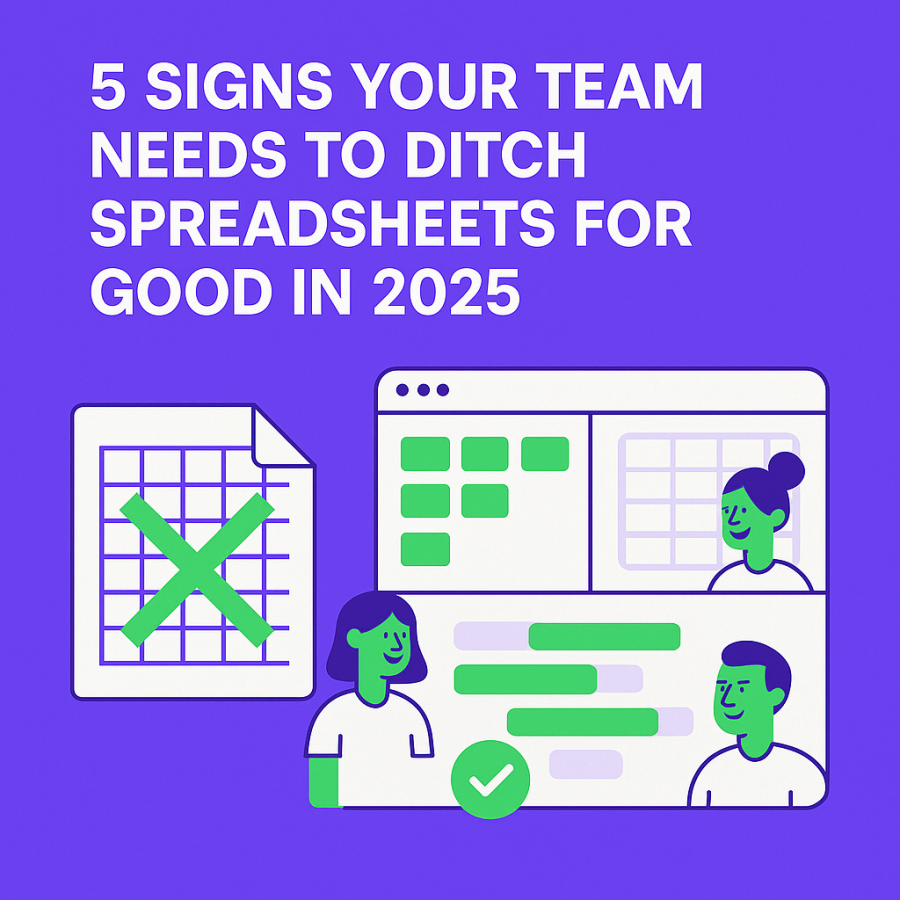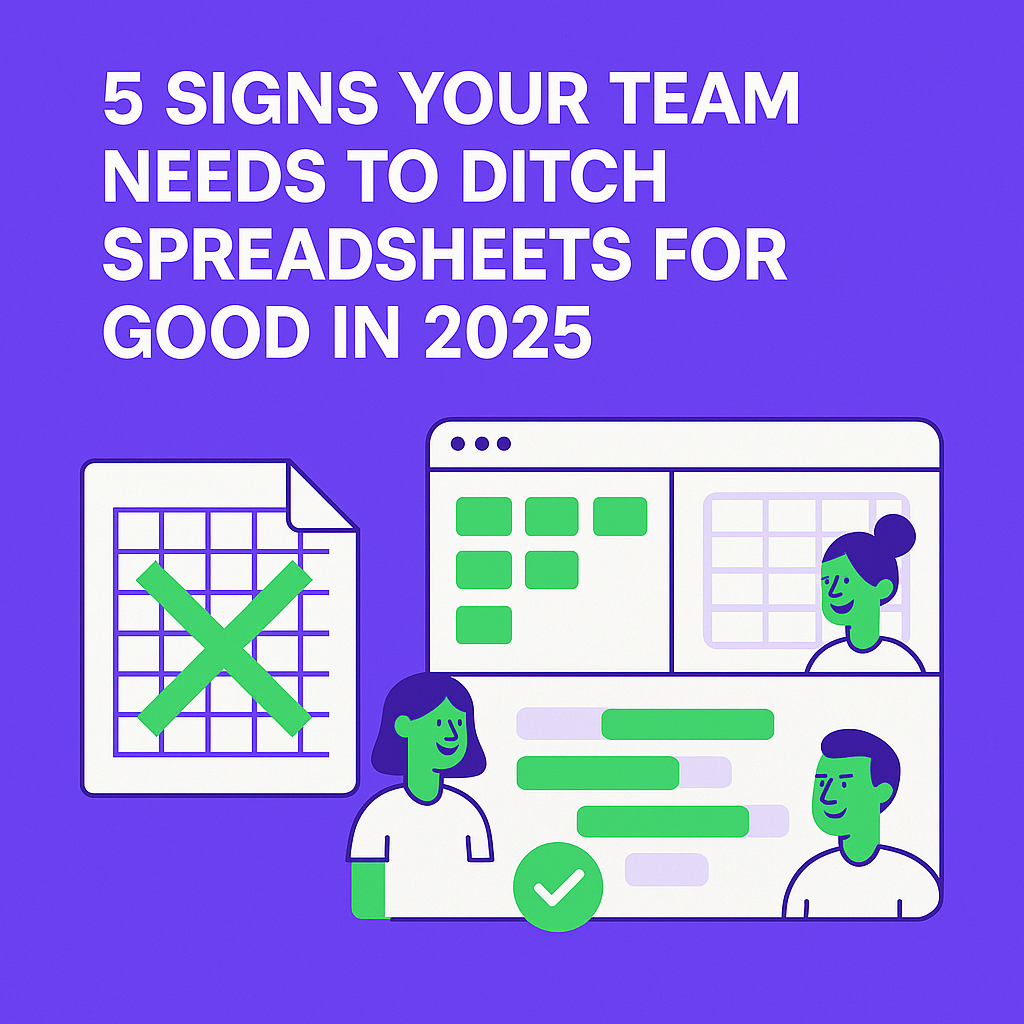Spreadsheets have long been the default tool for organizing data and managing work. They're flexible, familiar, and seemingly do the job—until they don’t.
In 2025, the pace of work is faster than ever. Teams are distributed. Projects are more complex. And businesses need more than static cells and color-coded rows to stay aligned and move quickly.
If you're still trying to run your projects in spreadsheets, here are five clear signs it’s time to consider something more powerful.
1. You’re Constantly Updating and Reformatting
Most teams using spreadsheets spend a surprising amount of time doing what feels like busywork—updating statuses, fixing broken formulas, copying and pasting rows, and double-checking for consistency.
One marketing agency we worked with had a weekly ritual: on Monday mornings, the project manager would spend nearly half a day collecting updates from different team members and manually organizing them in a master spreadsheet. It worked—barely—but it was time-consuming and error-prone.
Once they moved to Artavolo, updates happened in real time. Each team member could update their own work, and the project manager had a live view of everything that was happening. That Monday scramble? Gone.
2. Projects Feel Disconnected and Hard to Navigate
Spreadsheets don’t naturally support structure. If your tasks live in one tab, your notes in another tool, and your communication in Slack or email, you’re constantly context-switching.
A product development team told us they tracked features in Excel, held standups in Zoom, and documented decisions in Notion. No one could follow the full picture. When things fell behind, it was difficult to know what was missing or who was blocked.
Artavolo gave them one place where they could organize tasks, add notes, tag team members, and track statuses. Everything was linked, searchable, and easy to reference—even weeks later.
3. You Can’t See Progress at a Glance
Spreadsheets are great for capturing data, but they don’t provide visual clarity when you need to understand how a project is progressing. You can build conditional formatting, insert symbols, or build makeshift status dashboards, but it’s all manual.
An event management firm using Excel for planning shared that they often missed task overlaps or scheduling conflicts because they couldn’t visualize dependencies. It wasn’t until a conflict arose—like double-booking a venue or overlapping vendors—that they realized something was wrong.
After switching to Artavolo, they used the Calendar view to clearly lay out event timelines. They could instantly see what was happening when and where gaps existed.
4. You’re Not Sure Who’s Responsible for What
Spreadsheets don’t enforce ownership. Sure, you can add a column for "Assigned To," but it won’t notify anyone, track accountability, or highlight overdue tasks.
A remote software team we spoke to had a common issue: tasks in their spreadsheet were marked as "in progress," but no one knew who was actually working on them. Things stalled, deadlines passed, and finger-pointing started.
With Artavolo, each task has a clear owner. Team members only see what’s relevant to them. Missed updates and dropped responsibilities dropped dramatically—not because people changed, but because the system made accountability visible.
5. You Want to Use AI to Work Smarter, But You Can’t
Spreadsheets weren’t built with AI in mind. While you can integrate third-party tools or use basic formulas, they don’t help with writing, summarizing, or generating content the way modern teams now expect.
One content team told us they used Excel to manage their editorial calendar. Every article had multiple tabs: notes, briefs, tasks, statuses. Nothing was connected, and they had to rewrite the same summaries over and over.
With Artavolo’s Smart.Editor, they now write inside the task itself and use AI to generate summaries, translate text, and even assign follow-up items based on the content. It saves time and helps the team stay focused on the work itself—not the formatting.
Final Thoughts
Spreadsheets are great for data. But they’re not designed for project management. They don’t handle collaboration well. They don’t help with accountability. And they certainly don’t help you move faster.
Teams that switch to Artavolo often tell us the same thing: they didn’t realize how much time they were wasting until they made the change. When your tools are designed to support how modern teams work, everything feels lighter—and work just flows better.
If your team is still relying on spreadsheets, it might be time to rethink your workflow.

